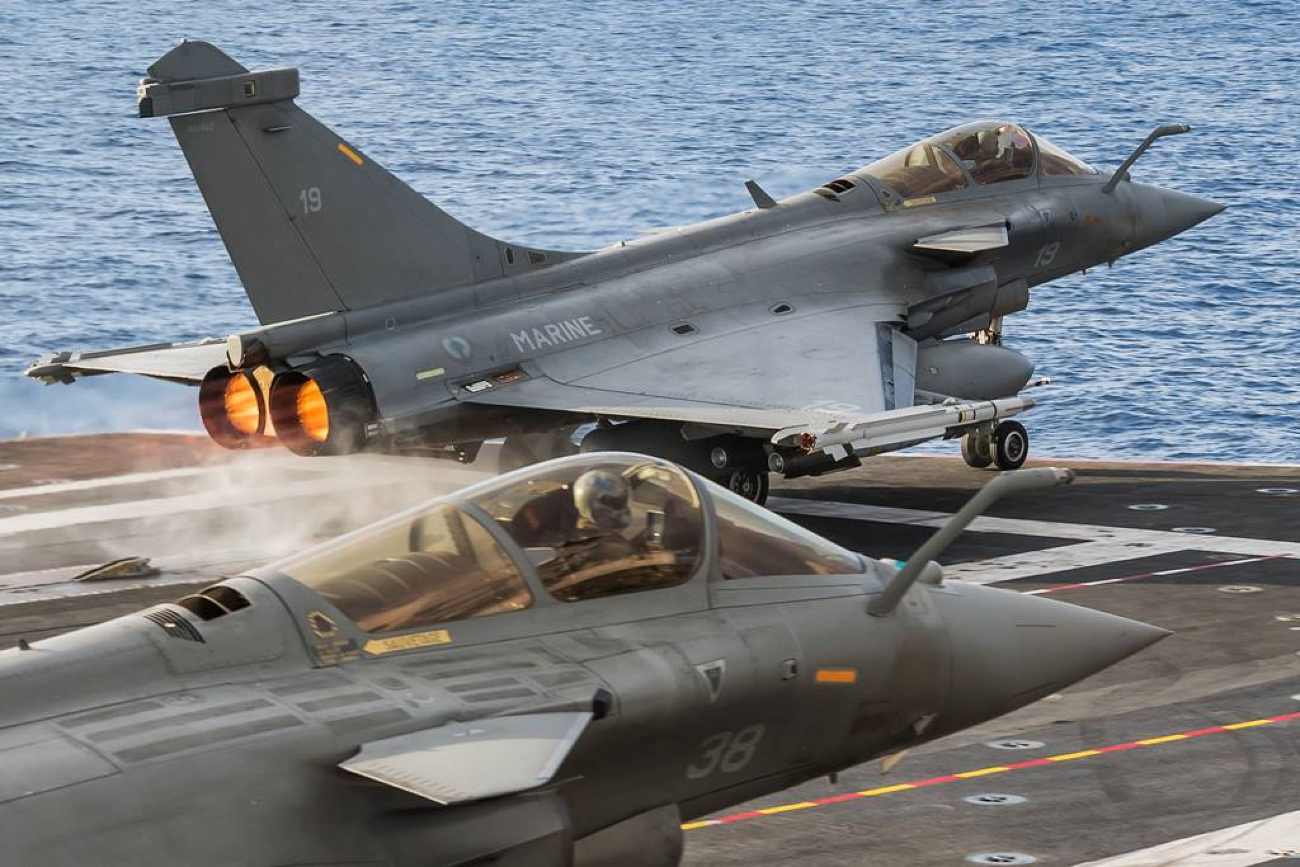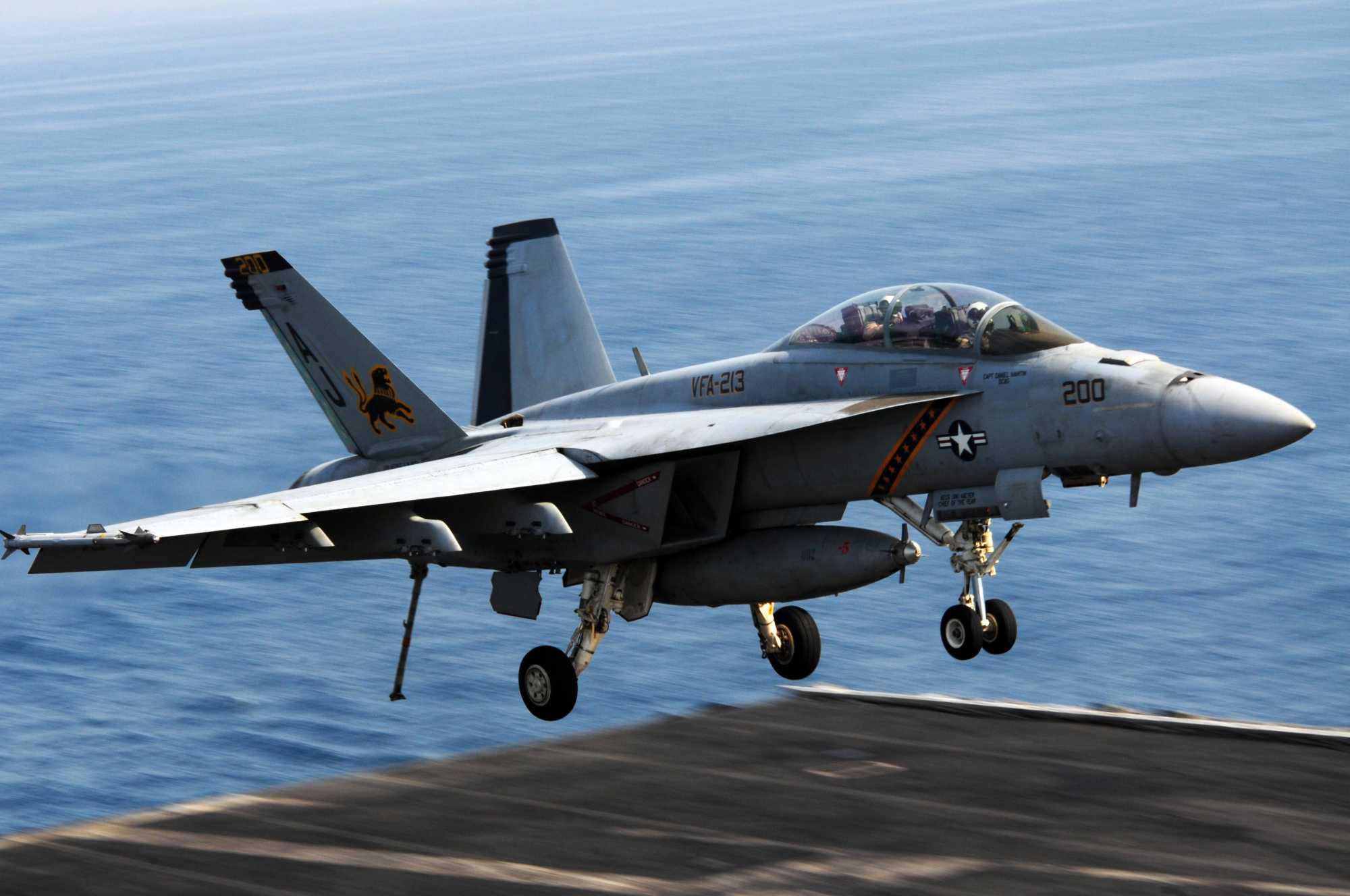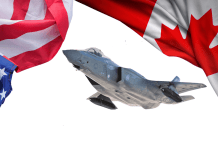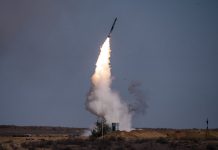By Neeraj Rajput
Indian Prime Minister Narendra Modi accepting French President Emmanuel Macron’s invitation as guest of honor for the annual Bastille Day on July 14 has elated a section of the Indian Navy who eagerly await fighter jets for the indigenous aircraft carrier INS Vikrant.
A few months back, the Indian Navy submitted a detailed report to the Ministry of Defense (MoD) on the carrier-based fighter jet to be operated off INS Vikrant.
The ‘dogfight’ to bag the contract, likely worth billions of dollars, is between two such carrier-based aircraft, the French company Dassault Aviation’s Rafale-M and American Boeing Company’s F/A-18 Super Hornet.
The Indian political leadership has to decide between these two multi-role carrier-borne fighters based on this Indian Navy’s report. The EurAsian Times has previously reported that Rafale-M, where ‘M’ stands for Marine, may have a “little edge” over the American jet.
“Both Rafale-M and Super Hornet have their respective advantages because both have similar standardization, but the question is from where can India get a better deal,” said a reliable source in the South Block, the seat of the Ministry of Defense in New Delhi, which also houses the Indian Navy headquarters, as well as the Prime Minister’s Office (PMO).
Can it be a curious case like the Rafale fighter jet of the Indian Air Force (IAF) when Modi, during his maiden 2015 visit to Paris, announced the procurement of 36 French aircraft?
The announcement of the government-to-government deal at that time had come as a surprise to many but sent a wave of smiles on the face of air warriors. The reason was the severe shortage of fighter squadrons in the IAF, and the Russian fighter jets like Su-30MKI and MiG-29 had issues of ‘serviceability.’
So, when last week, French President Macron wrote on his Twitter account in French, as well as in Hindi, loosely translated in English as, “Dear Narendra, I will be happy to welcome you in Paris as the guest of honor for 14th July Parade (sic),” it brought back memories of 2015 when Modi unanimously announced the Inter-Governmental Agreement between India and France for the IAF’s Rafale fighter jets. The camaraderie between the head of state of France and the head of government of India is no secret.
Eight years have passed since that 2015 deal, and all 36 Rafale fighter jets have reached India from France and are deployed at front-line air bases to take on any possible two-front simultaneous war by China and Pakistan.

While one squadron of Rafale is deployed at Ambala, mid-way between Pakistan and China borders, another squadron is deployed in Hasimara in West Bengal, close to the China-Bhutan trijunction.
The disputed Doklam area lies close to Hasimara on the trijunction where armies of India and China had a 72-day ‘faceoff’ in 2017 over Chinese military infrastructure construction too close to the trijunction for Indian and Bhutanese comfort.
“IAF is already operating Rafale fighter jets, and if the Navy also has a marine version of these (Rafale) aircraft for INS Vikrant the issues like commonality of equipment, supply chain, pilot training, and maintenance will be easy,” the South Block source told EurAsian Times, on the condition of anonymity. He added, by no means Super Hornets are out of the Race!
The Indian Navy needs at least 26 carrier-based aircraft for INS Vikrant. Though India’s public sector aviation company, Hindustan Aeronautics Limited, has designed and developed a naval version of Light Combat Aircraft, the Indian Navy wants more in the fighter jet than just the ability to fly off the flight deck of the aircraft carrier.
The reason is the LCA (Navy) is a single-engine fighter while for operations on aircraft carriers over the high seas, a twin-engine jet is required to increase survivability and greater thrust to take off from the short ramp runway on the flight deck, apart from a heavier undercarriage for hard landings on the flight deck and foldable wings to take the aircraft using a lift facility down the deck for maintenance and repairs.
It has been speculated, without valid reasoning, that a few LCA (Navy) could be inducted into the Indian Navy for training and other purposes. The Defense Research and Development Organization and the state-run HAL are now working relentlessly on a Twin Engine Deck Based Fighter (TEDBF).
But TEDBF is unlikely to be inducted into the Indian Navy, not before the end of this decade. For this ‘interim period’ until the TEDBF induction, the Indian Navy requires a multi-role carrier-based aircraft because INS Vikrant is now operationally ready but doesn’t have the required number of fighter jets to be deployed on its deck.
During the commissioning of INS Vikrant in September 2022 by PM Modi at the Cochin Shipyard Limited in Kochi, Kerala, a MiG-29K fighter jet was showcased on the deck.
The Russian-origin MiG-29K (‘Black Panthers’) aircraft were commissioned in the Indian Navy in 2013 for INS Vikramaditya, another aircraft carrier India has operated since 2013. India presently has 40 MiG-29Ks as ‘Black Panthers,’ though another five have crashed in the last few years.
Last year, the Indian Navy invited Dassault and Boeing to its Shore-Based Test Facility (SBTF) at INS Hansa naval air base in Goa for the trials of Rafale-M and F/A-18.
The SBTF is a mock-up deck of an aircraft carrier for the trials of carrier-based jets at INS Hansa, where MiG-29K fighter pilots were trained along with LCA (N) trials.
In February 2022, Rafale-M came for the trials at SBTF, followed by Super Hornet in July. By October 2022, Indian Navy had submitted a detailed report to the Ministry of Defense based on the outcome of the trials.

“Take the case of Russian MiG-29 fighter jets being operated by IAF and its naval version MiG-29K, which is deployed on board INS Vikramaditya, the common issue of maintenance and serviceability has been addressed to a large extent,” said an officer of the Indian Navy.
During heightened tensions between India and Pakistan post-Balakot air strike, the Indian Navy’s Black Panthers were at the Adampur air base of IAF in Punjab, which houses a squadron of MiG-29 aircraft.
For these reasons, Rafale-M has an ‘advantage’ over Super Hornet. Otherwise, both are high-quality fighter jets, said a source in the Indian Navy.
Additionally, the ‘economy’ of the deal would also matter because India had bought 36 Rafale aircraft for IAF in a deal to the tune of INR 59,000 crores (over US$8 billion at exchange rates in 2015). But, it is believed that France could give a better deal on ‘add-on’ jets, even if it is the marine version of Rafale.
“When India was in the process of acquiring INS Vikramaditya from Russia in the 2000s, the naval headquarter had deliberated upon purchasing Rafale at that time too. But, they were more expensive in comparison to MiG-29K. Also, Russians insisted on buying MiG-29K to operate on their aircraft,” recalls navy veteran Commodore Anil Jai Singh while speaking to EurAsian Times. Since India has strategic relations with France, the Rafale-M deal could be economical, added Singh.
For these reasons, PM Modi’s visit to Paris for Bastille Day is eagerly awaited. However, the details of French engagement and bilateral meetings are yet to be announced by India’s Ministry of External Affairs (MEA).
If it’s to be announced in Paris, such a deal has to go through the Defense Acquisition Council (DAC), the apex body of the defense ministry headed by Defense Minister Rajnath Singh, and the Cabinet Committee on Security (CCS) headed by Modi himself.
But no such decision has been taken yet by the two key decision-making bodies, informed a naval source. Before the Paris tour, Modi is likely to travel to the US at the invitation of the Joe Biden White House. So, both France and the US are keeping their fingers crossed.
- Neeraj Rajput is a Senior War Correspondent from India who has covered the Russia-Ukraine war.
- Please email us at etdesk (at) eurasiantimes.com
- The author tweets at @neeraj_rajput




